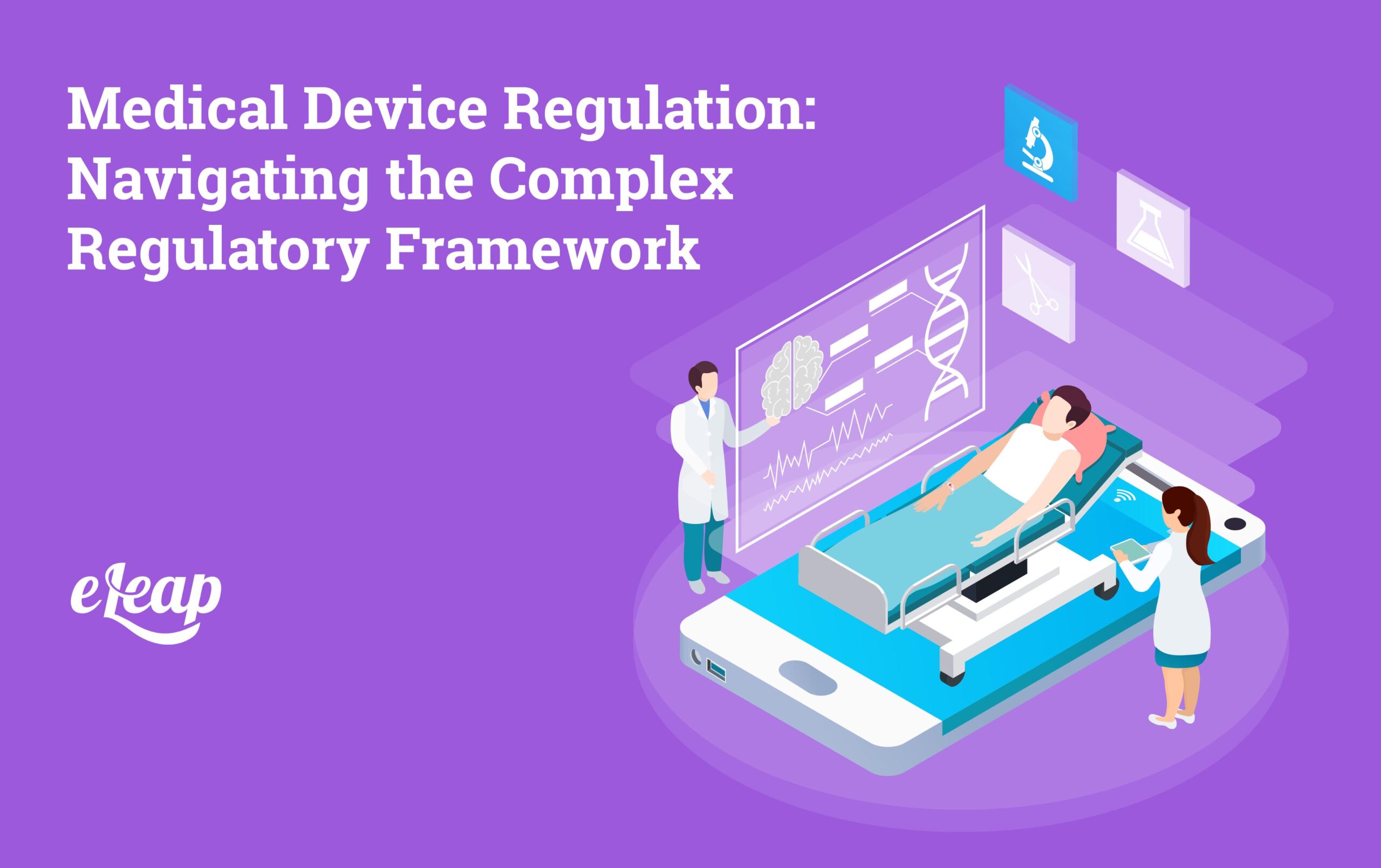Medical Device Regulation: Navigating the Complex Regulatory Framework

Medical device regulations are strict in ensuring the safety, efficiency, and quality of devices brought to market. To ensure compliance and effective product presentations, manufacturers must understand these standards. In this article, we cover all features of medical device regulations, such as Medical Device Listing, Quality System Regulation (QS regulation), Medical Device Reporting, Premarket Approval (PMA), Premarket Notification 510(k), and Establishment Registration.
It’s acute for producers to comprehend the complex lawful landscape around medical devices. These policies, which deal with the principles for guaranteeing the effectiveness and safety of medical devices, were created by the US Food and Drug Administration (FDA).
Establishment Registration – 21 CFR Part 807

The Founding Process, outlined in 21 CFR Part 807, is a critical step in the supervisory process for US producers of medical devices. This unit of the Code of Federal Regulations (CFR) states that trades that produce and market medical devices must register with the US Food and Drug Administration (FDA).
The main objective of Establishment Registration is to give the FDA inclusive information on the establishments engaged in the manufacturing, processing, stuffing, or storage of medical devices. To ensure the safety and effectiveness of advertised medical devices, the FDA requires this information for monitoring and regulating the industry.
Establishments need to register with the FDA yearly; the registration era typically runs from October 1 to December 31. Producers have to follow this timeline to keep regulatory compliance.
During the registration process, provide detailed information about the establishment, including its name, address, and business activity. Businesses must also specify the kind of devices they handle or manufacture. The FDA can classify firms accurately thanks to comprehensive data that facilitates efficient regulatory monitoring.
In addition to being required by law, Establishment Registration is a crucial component of the FDA’s broader plan to monitor and control the medical device industry. Because it keeps an extensive database of registered establishments, the FDA can respond swiftly to safety concerns, conduct inspections, and take necessary action to protect public health.
If manufacturers break the Establishment Registration regulations, they could face serious consequences. Failing to register or providing false information may result in legal action, which may carry fines and other penalties. Consequently, medical device initiatives must emphasize devotion to these regulatory standards to keep a seamless and compliant process.
List of Medical Devices under 21 CFR Part 807 Medical Device Regulations
Below is the list of medical devices under 21 CFR part 807 that follow medical device regulations. Under each Main device, there are sub-devices as well.
- Diagnostic Instruments:
X-ray devices, Devices for magnetic resonance imaging (MRI), Ultrasonic devices
- Medical Apparatus:
Dialysis machines, pacemakers, insulin pumps
- Surgical Instruments:
Surgical lasers, Endoscopes, and powered surgical devices
- Monitoring Tools:
Heart rate monitors, glucose meters, and blood pressure monitors
- Imaging Tools:
CT and PET scanners, as well as digital mammography equipment
- Implantable Technology:
Artificial joints, Cochlear implants, and cardiovascular stents
- Assistive devices:
Wheelchairs and Walkers and hearing aids and vision aids
- Laboratory apparatus:
Mass spectrometers; DNA sequencers, Hematologic analyzers
- Dental Instruments:
Dental implants, Dental lasers, Orthodontic instruments
- In vitro Medical Equipment:
Kits for pregnancy tests, Test kits for HIV, Strips for blood glucose tests
Importance and Standards for some medical devices, the Premarket Approval (PMA) process is an essential step. Here, we go over its importance and the requirements to get PMA. PMA Application Procedure: A comprehensive guide to PMA application navigation gives producers a clear path to approval.
IDE permits the use of experimental devices in clinical investigations—an introduction to IDE and its significance.
Producers who want to carry out medical research have to be conscious of how to get IDE permission and make sure all rules are followed.
21 CFR Part 820, Quality System Regulation (QS regulation)
Satisfying strict observance of the Quality System Regulation is essential to upholding exceptional manufacturing standards.
Respecting Quality Requirements
To guarantee the production of safe and effective medical equipment, manufacturers must comply with the rigorous quality standards outlined in QS regulations.
Medical Device Reporting: 21 CFR Part 803 Reporting Necessities
The reporting requirements charted in 21 CFR Part 803 must be agreed upon by producers to address adverse events and issues concerning their products.
Concluding Remarks
In conclusion, producers must comprehend the intricate lawful landscape around medical devices. Agreement with Medical Device Listing, Establishment Registration, Premarket Notification 510(k), Investigational Device Exemption (IDE), Premarket Approval (PMA), Quality System Regulation (QS regulation), and Medical Device Reporting ensures the delivery of safe and effective devices to the market.
- Q: How often should companies update their registration with the FDA?
- A: Establishments must repeat their process each year between October 1 and December 31.
- Does each medical device need to have Premarket Approval (PMA)?
- A: Only a small number of high-risk gadgets require the PMA.
- What is the period it requires the FDA to examine a 510(k) submission?
- A: 510(k) filings are subject to a ninety-day FDA review period.
- Q: Is it possible to get IDE approval backward?
- A: Before beginning any clinical research, it is necessary to obtain IDE approval.
- Q: How can producers guarantee adherence to the Quality System Regulation?
- A: The secret to compliance is putting a robust quality management system in place.